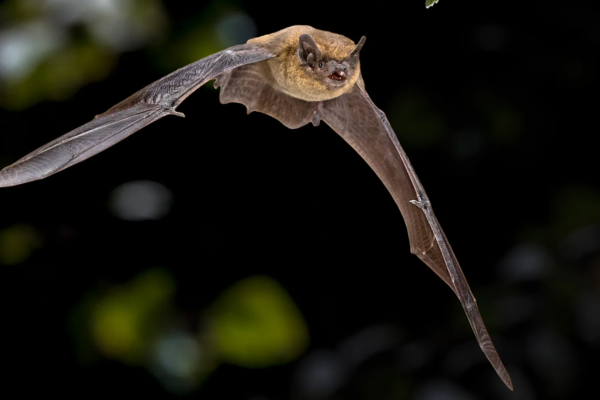A Ranger writes: bats
Our Countryside Rangers have a wealth of knowledge on the places, plants and species that call East Lothian home. Ranger Richard English offers some insights into bats and their behaviours.
Bats have been around for at least 50 million years, which is a whole lot longer than we’ve managed, and there are now over 1400 species worldwide, making up over 20% of mammal species. These range from flying foxes – the size of a small dog – to the world’s smallest mammal, the bumblebee bat. In the UK there are roughly nineteen species, of which nine or ten get as far north as Scotland. All of our bats feed on flying insects, and most hunt by using echolocation, sending out loud signals (beyond the range of our hearing) which bounce back and are picked up by the bat’s incredibly sensitive ears.
 Soprano pipistrelle bat credit: ibats.org.uk
Soprano pipistrelle bat credit: ibats.org.uk
The majority of Scottish bats fall into two genera – the Pipistrelles and the Myotis (mouse-eared) bats. There are three species of pipistrelle and, whilst one is very rare, the other two are the bats we’re most likely to see in East Lothian.
Common and soprano pipistrelles often roost in loft spaces and as a result are frequently found in urban areas. Despite the names, soprano pipistrelles are usually the more common of the two, at least in this area. Soprano pipistrelles are small bats, with an average body length of 3.5 to 4.5 cm and a wingspan of 20 to 25 cm. Their weight ranges from 3 to 8 grams. The fur on their back is reddish-brown, while the underside is pale grey or buff. Their wings are broad and short relative to their body. This is an adaptation for agile flight in cluttered environments.
Daubenton’s bats - unique hunters
Of the Myotis bats, the one you’re most likely to spot in this part of the world is the Daubenton’s bat. The species was named after an eminent French naturalist of the 18th century, Louis Jean-Marie Daubenton. This species is a real specialist, feeding fast and low over ponds and slow-moving rivers, leading to some people comparing them to small hovercrafts. Daubenton’s bats have a unique hunting method – in addition to grabbing their prey in their mouths, like most bats, they also use their feet and tail membranes to scoop insects from the water surface.
They tend to roost close to water (unsurprisingly) and may use old bridges and boathouses, although natural caves and tree crevices are also popular. They’re less likely than pipistrelles to be seen in towns, although they’re not uncommon along the Tyne in Haddington or the Esk in Musselburgh.

Hibernating Daubenton’s bat credit: Lennart Lennuk
September can be a very busy time for most UK bat species and Daubenton’s are no exception. The mating season starts around this time, so bats will be busy looking for suitable partners. Males often attempt to attract females by producing special ‘songs’ – these are not as melodic as the name suggests and can include clicks, purrs and buzzes. Although mating mostly takes place in late summer and early autumn, fertilisation is delayed so that the young are not born until the following spring. Most bats also have an eye on the approaching winter and will start to feed up in order to build up their fat reserves, which will (hopefully) see them through hibernation.
 Daubenton’s bat in flight credit: Guido Gerding
Daubenton’s bat in flight credit: Guido Gerding
Bats are not to everyone’s taste – they’re nocturnal, a bit mousy and are associated with vampires. However, to my mind they’re a superb example of evolutionary adaptation and, a bit more subjectively, just plain fantastic to watch. They are, more importantly, an integral part of ecosystems and deserving of all the protection they can receive. If that’s not enough, they also eat a huge number of midges – and that’s got to be a good thing.
Keep up to date
Keep up to date with all things Countryside Ranger on the service’s facebook or Instagram pages. You’ll find news and information to help you make the most of your time in our coast and countryside spaces as well as beautiful photography of the species that live here.
Facebook: @ELCrangers
Instagram: @elcrangers